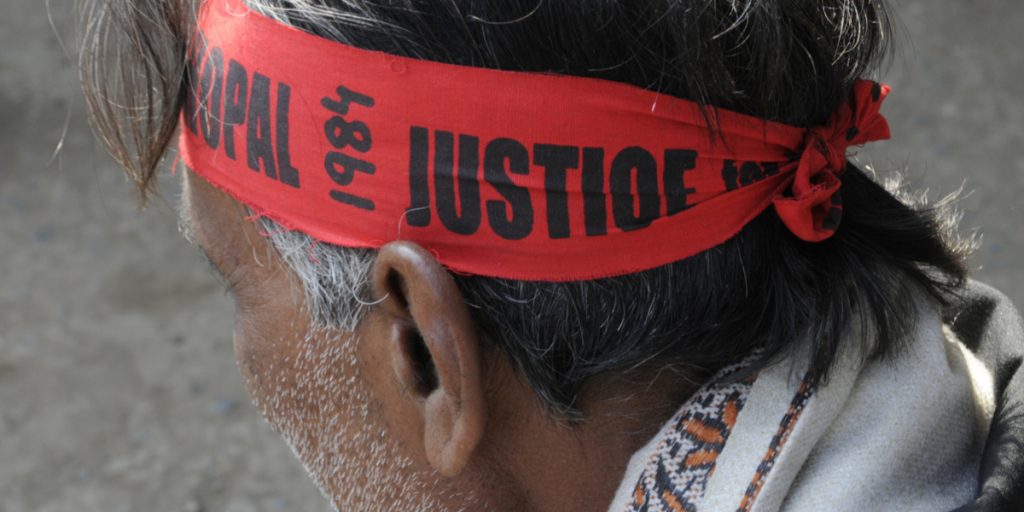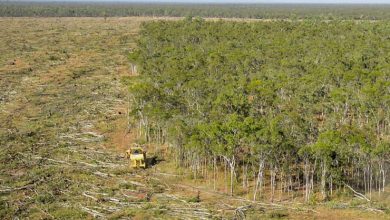Rajkumar Keswani – The Journalist Who Foretold One Industrial Disaster Is Killed By Another

Forty years ago, Bhopali journalist Rajkumar Keswani wrote his first article warning of the dangers posed by safety lapses at the Union Carbide plant in the city. After nine months of research, triggered by the death of a friend at the plant, his article outlined a catalogue of problems. Just over two years later, in the early hours of 3 December 1984, while the city of 900,000 people was sleeping, 45 tons of the dangerous gas methyl isocyanate escaped from the pesticide plant of the Indian subsidiary of Union Carbide Corporation.
In hearing the screams and commotion coming from the city streets, Rajkumar knew exactly what had happened. His research told him what was coming, the toxic and leaking gas which is heavier than air would settle near the ground. Acting quickly, he got his wife onto the back of their scooter hoping to race ahead of the gas cloud.
News channels worldwide covered the Bhopal gas ‘disaster’. But the word ‘disaster’ implies it was purely accidental, whereas Rajkumar Keswani’s research and articles show it was predictable. In the two years leading up to the gas leak he tried to raise the alarm again-and-again.
His articles documented numerous safety lapses, rusty and leaking pipes, poor quality training, corroded and faulty safety valves and equipment failure. Employees who wanted these problems exposed managed to get him into the plant and show him a number of confidential safety audits, including a 1982 report documenting 61 hazards, 30 of which were classed as critical and 11 in the methyl isocyanate storage units.
Rajkumar first article, published 40 years ago today was titled “Bachaiye huzoor is shahar ko bachaiye” (“Save Please, Save This City“). He followed this with two more in October 1982, Bhopal Sitting On Top Of A Volcano and If You Refuse To Understand, You Will Be Reduced To Ashes. His dogged determination resulted in him lobbying state legislators and petitioning the Supreme Court of India. No one wanted to listen. Instead, they wanted to believe the propaganda of world class safety systems and hope that nothing would go wrong.
In June 1984, under pressure to reduce costs, a decision was made to switch of the refrigeration unit designed to chill the methyl isocyanate storage tank. The plant was making losses and switching off the unit saved US$37 a day.
Because no one wanted to believe Rajkumar warnings and, as a result, it is estimated between 7,000 – 10,000 died in the first 3 three days from lung failure, the final death toll was over 20,000. A 2014 report in Mother Jones quotes a “spokesperson for the Bhopal Medical Appeal, which runs free health clinics for survivors” as saying “An estimated 120,000 to 150,000 survivors still struggle with serious medical conditions including nerve damage, growth problems, gynaecological disorders, respiratory issues, birth defects, and elevated rates of cancer and tuberculosis.”

In the days after the gas leak, Rajkumar Keswani spent his time at the overwhelmed hospitals and morgues, listening to doctors and the survivors. This time spent, simply doing his job, weakened Rajkumar lungs and in May 2021, Rajkumar Keswani died from complications from COVID-19. The journalist who foretold one industrial disaster is killed by another.
Because COVID-19, if we want to believe it or not, is the result of a runaway chain reaction in the poorly managed, poorly monitored and poorly regulated legal trade in wild species. Some of the world’s wealthiest industries benefit from this trade. COVID-19 is now the world’s biggest industrial disaster. But here, as with Bhopal, the word ‘disaster’ implies it was purely accidental, which it isn’t.
The international trade in wild species was estimated to be worth is over US$360 billion as long ago as 2009 and in addition many countries have large domestic trade volumes. Fashion and furniture are two of the biggest industries to profit from this trade, with some of the most well-known luxury brands using wild species as the raw materials in their supply chains.
As with the Bhopal gas leak, the risks inherent in the wildlife trade are being ignored. Companies and industries who profit from the trade in wild species are not investing in supply chain transparency. One result is we can’t predict were the next industrially triggered zoonotic pandemic will emerge. Any company or industry that uses wild species as its raw materials without investing in the necessary monitoring and government is cost cutting but this time the risk is to 8 billion people. Rajkumar Keswani death from complications associated with COVID-19 show that not much has changed in the interning 40 years. The laissez-faire approach to the regulation of the trade in wild species means companies are putting us all at risk, as we collectively sleep, to maintain their ever-growing profits.
Our work is entirely reader-supported, so if you enjoyed this article please consider sharing it around, following us on Twitter or LinkedIn, or throwing some money into our tip jar on Paypal. Everything we publish is open access. Finding the time to do the research and writing is helped by the goodwill of people who are also looking for real answers to what is happening. The best way to make sure you don’t miss the articles we publish is to subscribe to the mailing list at our website.

Lynn Johnson is a physicist by education and has worked as an executive coach and a strategy consultant for over 20 years. In her work she pushes for systemic change, not piecemeal solutions, this includes campaigning for modernising the legal trade in endangered species, to help tackle the illegal wildlife trade.





